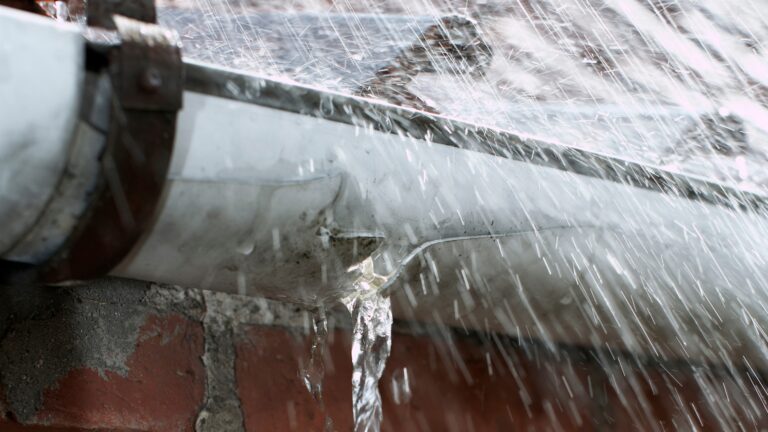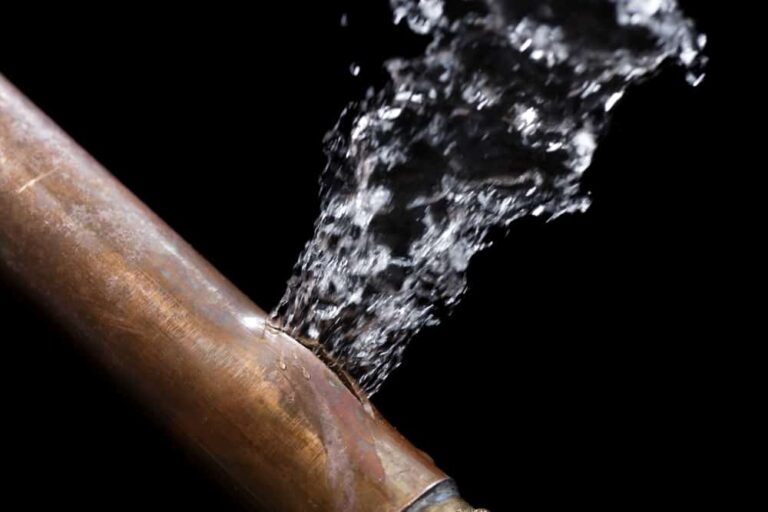Maintaining leak-free gutters is paramount for the structural integrity of your home. Properly functioning gutters channel water away from your foundation, preventing water damage, mold, and erosion around your property. A compromised gutter system can lead to expensive and extensive repairs. Recognizing the significance of this home maintenance task, this blog post is dedicated to offering professional tips for fixing leaking gutters, ensuring that your home remains safe and dry during even the heaviest of downpours.
Safety Precautions
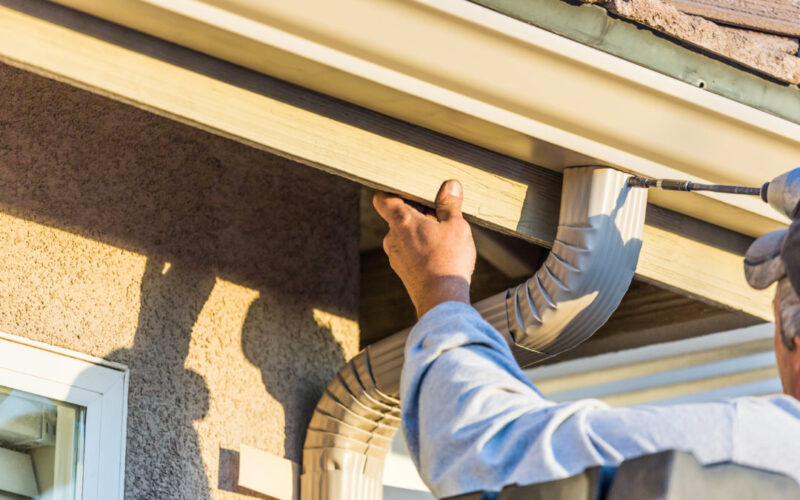
Before embarking on gutter repairs, it’s crucial to prioritize safety. Working at height introduces risks, making it essential to take proper precautions. Ensure you have a sturdy, stable ladder and place it on a solid, even surface. Wear non-slip shoes, durable gloves to protect against sharp edges and debris, and consider safety glasses to shield your eyes. Remember, no repair is worth risking your well-being. If conditions are precarious or you’re uncertain about your safety, seek professional assistance.
Assessment and Inspection
A meticulous inspection is the first step in addressing gutter leaks. Start by observing your gutters during a rainstorm, noting where water overflows or drips. During dry weather, inspect your gutters for visible signs of damage. Rust, holes, sagging sections, or loose connections can all contribute to leaks. Pay special attention to the seams and corners, as these are common leak points. This thorough evaluation will help you understand the extent of the damage and guide your repair strategy. If you’re in for a thorough inspection please read more.
Gutter Cleaning
Before proceeding with any repairs, it’s imperative to clean your gutters. Clogged gutters can exacerbate leaks and make it challenging to identify the actual issues. Equip yourself with a gutter scoop or a small garden trowel to remove leaves, twigs, and sediment. A garden hose with a spray nozzle can be helpful for flushing out fine materials and checking the water flow. Ensuring your gutters are clean not only facilitates repairs but also extends the life of your gutter system.
Materials and Tools
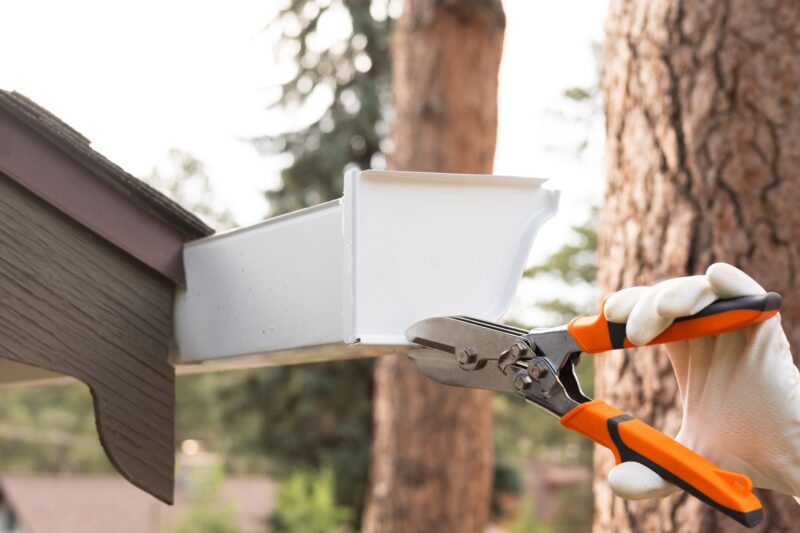
Gathering the right materials and tools beforehand streamlines the repair process. For sealing leaks, you’ll need a high-quality gutter sealant or silicone caulk. Ensure you have enough gutter hangers or spikes to secure loose sections. Other essential tools include a caulking gun for applying sealant, a pair of sturdy gloves, a ladder, and potentially a pair of tin snips for trimming any metal components. Having everything at hand minimizes downtime and ensures a smooth repair process.
Sealing Leaks
Sealing gutter leaks effectively requires patience and precision. Begin by thoroughly drying the area around the leak; the sealant adheres best to a clean, dry surface. Cut the tip of the sealant tube at a 45-degree angle, ensuring the opening is slightly smaller than the gap you’re filling. For silicone sealants, apply in a smooth, continuous bead, ensuring full coverage over the leak. Press the sealant into the gap with a putty knife or your finger (wearing a glove), smoothing it out for a watertight seal. Allow ample time for the sealant to cure, avoiding water exposure during this period.
Replacing Damaged Sections
When gutters begin to show visible signs of damage such as cracks, rust, or severe dents, it’s crucial to consider replacing the affected sections to prevent water leakage and further structural damage to your property. The procedure for safely removing and replacing damaged sections requires careful attention. Firstly, ensure that you are working with the right tools and safety equipment, including a sturdy ladder, gloves, and eye protection. Begin by removing any debris and detaching the fasteners or hangers that secure the damaged section to the adjacent parts. Carefully remove the section, ensuring not to cause damage to the surrounding areas. When installing the new gutter section, it’s essential to secure it properly with hangers or screws and to ensure that it aligns seamlessly with the existing sections for efficient water flow and a clean, uniform appearance.
Realigning Gutters
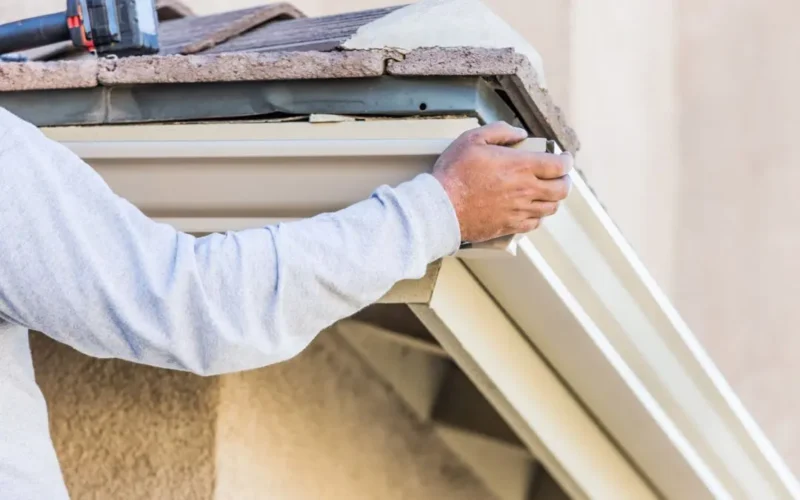
Over time, gutters may sag or become misaligned, hindering their ability to channel water effectively. Realigning your gutters is a critical step in maintaining their functionality. This process typically involves inspecting the entire length of the gutters for any signs of sagging or detachment from the fascia board. The use of gutter hangers is paramount in this process. These hangers provide the necessary support, keeping the gutters firmly attached to the roof. It’s important to ensure that the gutters are not only securely fastened but also aligned at the correct angle to facilitate the smooth flow of water towards the downspouts. Proper alignment and secure attachment prevent water from pooling in certain sections, a common cause of leaks and overflows.
Downspout Maintenance
Downspouts play a pivotal role in the gutter system, channeling water from the roof and away from the foundation of the house. Ensuring that they are free from blockages is crucial in preventing leaks and water damage. Regular cleaning of the downspouts involves removing any debris, leaves, or nests that may cause blockages. In some cases, it may be necessary to disassemble the downspout to remove the clog effectively. Additionally, checking for and repairing any loose sections or leaks in the downspouts can further ensure that water is being diverted correctly away from the property. Proper maintenance of downspouts is essential in safeguarding the structural integrity of your home and in preventing costly water damage.
Gutter Guards and Covers
Installing gutter guards or covers is a proactive measure to prevent debris from clogging the gutters, thereby reducing the risk of leaks and overflow. These guards come in various types, including mesh screens, foam guards, and surface tension units, each designed to allow water to enter the gutters while keeping leaves and other debris out. While the initial investment may seem substantial, the benefits of reduced cleaning and maintenance requirements, along with improved gutter functionality, make gutter guards a worthwhile addition. They not only extend the lifespan of your gutters but also ensure consistent performance, especially during heavy rainfalls.
Regular Maintenance Schedule
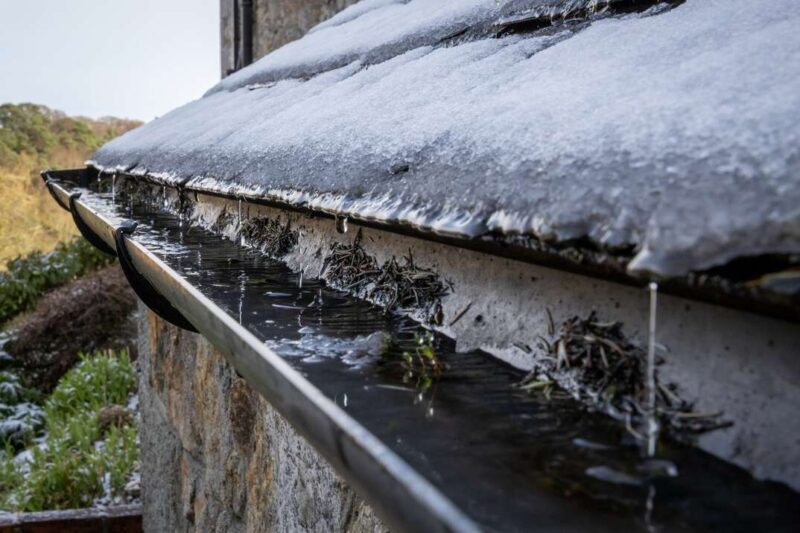
The longevity and efficiency of gutters heavily depend on regular maintenance. Establishing a gutter maintenance schedule is essential in preventing future leaks and structural damage. It’s advisable to inspect and clean your gutters at least twice a year, typically in the spring and fall, to remove any debris accumulated during the winter or after storms. During these inspections, look for signs of wear, ensure all sections are securely fastened, and check that the water flows correctly through the gutters and downspouts. Regular maintenance not only extends the life of your gutters but also helps in identifying potential issues before they escalate into major problems.
In summary, maintaining a leak-free gutter system requires a proactive approach, including regular inspections, timely repairs, and the installation of preventive measures like gutter guards. By taking these steps, homeowners can safeguard their property against water damage and ensure that their gutter system remains functional and effective throughout the year.
Related Posts:
- How Do You Write a Work Instruction? Crafting Clear…
- How to Build a Ground Level Deck: Pro Tips for Easy…
- How to Mix Different Types of Coffee Beans Like a…
- How to Calculate Long-Term Disability Premium: Legal…
- Social Media Management Strategies for Building a…
- How to Naturally Increase Fertility: Top Tips and Strategies

